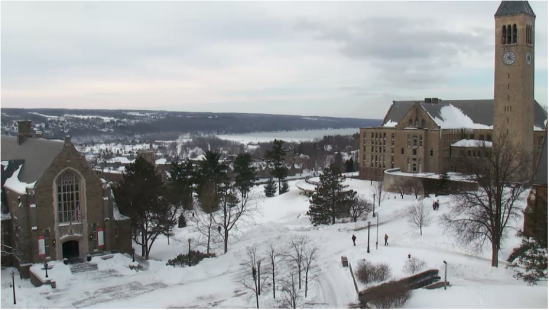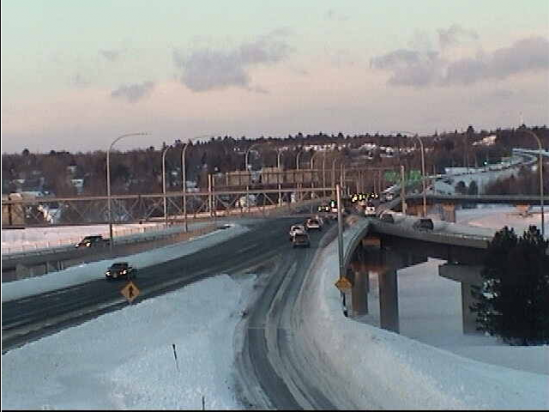Monday, 16 February, 2015 -( +4˚F / -16˚C & overcast @ 4:00 pm near Ithaca )- -( +12˚F / -11˚C & cloudy @ 5:00pm Closer to Halifax —jim w—)- — { Headlines compiled by douglas j otterson & jim wellington, with help from —jda— } { Some things change, some articles remain. Do you know where your survival kit is? —djo— }


{ Weather News? Both New York State and New Brunswick have survived the latest major snow storm event. New Brunswick probably got hit harder than New York State did. }
{ Today’s Birthdays : — You can find all this and more at http://www.historyorb.com/today/birthdays.php
February 16th: 1866- Johann Strauss, Austria, composer (Waltz King). 1884- Robert Flaherty, Mich, father of documentary film (Nanook of North). 1903- Edgar Bergen, ventriloquist (Charlie McCarthy), born in Chicago, Illinois. 1909- Hugh Beaumont, Lawrence Ks, actor (Ward Cleaver-Leave it to Beaver) & Richard McDonald, American fast food pioneer (d. 1998). 1911 – Hal Porter, Australia, writer (Tilted Cross, Paper Chase). 1912 – Machito “Frank Grillo”, Florida, bandleader (created salsa music). 1925 or 1926- John Schlesinger, director (Midnight Cowboy, Darling), born in London, England. 1935- Sonny Bono, vocalist (Sonny & Cher)/(Rep-R-Ca, 1995-98), born in Detroit, Michigan. 1954 – Margaux Hemingway, Portland Or, actress (Lipstick, They Call Me Bruce). 1957 – LeVar Burton, Landstuhl Germany, (Roots, Star Trek Next Generation). 1958- Ice-T [Tracy Marrow], Newark, New Jersey, American rapper and actor (New Jack City, Tank Girl, Crazy Six) & Lisa Loring, actress (As the World Turns, Wednesday-Addams Family) (The original Wednesday Addams on the TeeVee show). 1959 – John McEnroe, Wiesbaden, Germany, American tennis great (US Open 1979-81, 84 Wimb 1981, 83, 84). 1964 – Christopher Eccleston, English actor (Dr Who, Heroes). 1998 – Mr Jefferson, Virginia, 1st cloned calf. }
==============
{ Canadian Headlines : From : http://www.cbc.ca/news <— Link }
Ottawa drops back-to-work legislation as CP Rail, Union end strike { * I capitalized “Union” cbc news didn’t. * —djo— }
Student says U of T failed to help her avoid attacker {* The University of Toronto is investigating the way it handled a report of sexual assault after a student says the school failed to help her avoid her attacker in classes she shared with him, CBC News has learned. * —djo— }
Lesley Gore, singer of ‘It’s My Party’ and ‘You Don’t Own Me’, dead at 68 { * I remember seeing her on a local -New Jersey/New York City area- Rock and Roll teevee program, after lip-syncing one of her hits – smile and give the host of the program a list of reasons why she would make the perfect girl friend for Paul McCartney. One of her reasons was that they were both left handed. * —djo— }
RCMP accused of helping mother abduct baby to Australia { * The father is suing the RCMP, alleging the force helped her commit a criminal offence. * —djo— }
==============

Offbeat News:
RCMP find stranded seal near Highway 9 in Newtown, N.S. { }
Cocaine found in pocket of jacket at Value Village { }
Mark Critch locks lips with Danny Williams for IceCaps’s kiss cam { }
Scorpion on a plane: Woman stung before flight takes off { }
==============

Local / New Brunswick / Maritime News:
2 Moncton Times & Transcript editors out after ethics probe { }
New Brunswick couple stranded in SUV in P.E.I. for 24 hours { }
Weekend storm blankets parts of Maritimes with 60 cm of snow { }
Moncton’s Claude Gauthier loses Mars One bid { * & Doug Otterson is singing “Mars Needs Ice-Holes, Lets Send Stephen Harper” * —jim w— }
==============





Leaky saltwater-disposal wells allowed to inject fluid underground anyway, review shows
DICKINSON, N.D. – The North Dakota Department of Mineral Resources’ Division of Oil and Gas has allowed saltwater-disposal wells to continue injecting fluid underground even as mechanical integrity tests – meant to detect weaknesses in the well’s construction – have indicated leaks in parts of the wells’ multiple layers of casing.
A review of 449 well files and more than 2,090 mechanical integrity test reports show how state officials conditionally approve disposal wells even after they don’t meet widely accepted pressure testing standards.
Like oil and gas wells, disposal wells consist of multiple layers of steel and concrete tubing that stretch past layers of soil, rock and aquifers, thousands of feet underground. But instead of carrying oil and gas to the surface, injection wells pressurize saltwater – commonly referred to as produced water – shooting it back underground into porous geological formations.
GRAPHIC: Saltwater disposal wells
While the records don’t document any instances of groundwater contamination, they highlight how the agency has allowed wells with structural problems to operate, sometimes for years, even though guidance documents from the U.S. Environmental Protection Agency recommend wells with significant pressure losses be repaired within 270 days and that wells with less than two viable layers of casing be shut down during that time.
Officials with the Division of Oil and Gas said they have the authority to approve the wells for use because they were given primary enforcement responsibilities by the EPA, and that the conditional approval of wells are not considered test failures, suggesting the EPA guidance doesn’t apply to those cases.
Mark Bohrer, the agency’s underground injection control manager, said decisions to conditionally approve wells that lose pressure during testing were based on geology and petroleum engineering, and that if there was any threat to drinking water, the wells would be shut down.
“If we had any inkling that there would be contamination of (U.S. drinking water), the well would be shut in,” Bohrer said. “That is the last thing I want to do is contaminate somebody’s freshwater well.”
However, a review of state and federal documents, as well as interviews with geologists, engineers, environmental policy experts and lawyers who have litigated under the Safe Drinking Water Act, suggests the agency is loosely interpreting guidance and protocols that are meant to maintain the multiple layers of protection that separate aquifers from the toxic saltwater.
In parts of North Dakota, rural landowners rely on underground aquifers as a source of drinking water for themselves and their livestock.
“The reason well integrity is important is because if you develop some sort of leak then you could have fluid that moves, in the worst case, up to an aquifer,” said William Fleckenstein, a professor of petroleum engineering at the Colorado School of Mines. “Typically, that is what you are trying to avoid with the variety of integrity tests that are done.”
While saltwater spills on the surface can contaminate soil, leaving behind withered crops and barren patches of land, scientists have found that saltwater contamination of an aquifer can last for decades, with no economically feasible way to clean it up.
“It doesn’t just flush out and disappear,” said Joanna Thamke, a hydrologist with theU.S. Geological Survey, who has studied saltwater contamination of aquifers in Montana and North Dakota.
Saltwater is a mixture of hydraulic fracturing fluid – the water and proprietary chemicals that companies use to break apart shale deposits deep underground – and produced water – the briny solution trapped with oil and gas in those formations.
The toxic mix often contains significant levels of arsenic, lead, ammonium, benzene, bromide, radioactive material and high concentrations of chlorides. In North Dakota, saltwater has been shown to have ammonium levels at 300 times the EPA-recommended limit and chloride levels high enough that if any more salt was added, it wouldn’t be dissolved in the fluid.
While medical researchers have only begun to analyze how low levels of continued exposure to these oil and gas contaminants through the environment can affect people, medical science has already shown that high concentrations of these elements can cause cancer, neurological disorders and birth defects.
Bohrer said there are no reported cases of a saltwater disposal well contaminating an underground aquifer in North Dakota and at no point has the agency placed underground aquifers at risk to contamination.
But energy and public health experts said the long-term impact saltwater can have on an aquifer and the danger the fluid can pose to public health emphasizes the importance of constantly maintaining the mechanical integrity of disposal wells.
“There is a reason well bore integrity is tested,” said Seth Shonkoff, the executive director of Physicians, Scientists and Engineers for Healthy Energy, a think tank that aims to bring scientific transparency to energy and policy issues.
State officials said the EPA guidance documents related to integrity testing don’t hold the same standing as the administrative rules, and that the agency has the authority to choose which EPA guidelines to follow.
“There is a big difference between guidance and having your own (underground injection control) program,” said Alison Ritter, the public information specialist for the Division of Oil and Gas.
But environmental lawyers who reviewed the guidance documents said the state’s actions were legally questionable and could open the agency up to citizen lawsuits or a review by the EPA if enough people petitioned federal officials.
Bohrer said EPA officials were fully aware of how the Division of Oil and Gas operates the injection control program in North Dakota, but federal reports and email responses from the EPA Region 8 office in Denver suggest the federal agency’s oversight of state injection programs is limited due to staffing and budget constraints.
The findings of a Forum News Service investigation come at a time when landowners and Democratic legislators have called for a performance review audit of the Division of Oil and Gas and as agency officials have resisted legislation that would separate their dual roles as the regulator and promoter of the state’s oil industry.
As large surface spills have flowed onto farmers’ fields and into streams, grabbing public attention and causing lawmakers to rethink regulations over oil and saltwater pipelines, the documents highlight another, largely unseen but vital, part of the agency’s regulatory responsibilities.
The integrity reports raise questions about the agency’s criteria for pressure testing and conditional approvals, as the number of operating disposal wells in the state increased from 293 to 486 in the past seven years and the amount of saltwater disposed of jumped from 94 million to 350 million barrels in 2014.
Officials with the Division of Oil and Gas disagreed with the points raised by Forum News Service and in an email response said that if anyone is to fully understand the agency’s underground injection control program they should have a strong background in petroleum engineering and geology.
“The UIC program is highly technical and complex, with regulatory development and implementation evolving over time,” Ritter wrote in an email.
Regulations covering underground injection control programs began in the early 1980s under the Safe Drinking Water Act of 1974, after federal lawmakers recognized the threat that injection wells posed to underground aquifers.
As part of the law, states could apply to take over primary enforcement responsibilities for injection wells, including Class II wells that handle saltwater and other liquid waste produced during the oil and gas drilling process.
When a production well is hydraulically fractured, millions of gallons of saltwater surge back to the surface with the oil, and continue to flow throughout the lifespan of the well. This large influx of liquid waste requires companies to dispose of the toxic fluid as long as the well is in operation.
While injecting saltwater underground has been shown to be a better option than attempting to treat the fluid or storing it in pits, environmental policy experts point out that the strict guidance regarding injection wells is in place to eliminate any chance of the steel and concrete tubing becoming pathways through which saltwater leaks into or near an underground source of drinking water.
In order for the Division of Oil and Gas to take over the underground injection control program in 1983, the state had to adopt rules that met minimum standards for construction, permitting, monitoring, enforcement and plugging of the wells.
But while those rules require wells to pass mechanical integrity tests every five years without a “significant leak,” Bohrer said the agency doesn’t have guidance to define what a significant leak is.
The most common mechanical integrity test conducted is a standard annular pressure test (SAPT) where the annulus, the space between the casing and production tubing, is pressurized with liquid to see if it holds.
Since the 1980s, at least 13 states and the EPA have adopted administrative rules or guidance defining the standards for pressure testing, including some of the country’s largest oil producing states, like Montana, California, New Mexico, Colorado, Oklahoma, Kansas and Texas.
In all of those cases, the rules and guidelines state that tests are considered failures if a well loses more than 5 to 10 percent of the pressure placed on the annulus over 15 to 30 minutes.
Officials with the Division of Oil and Gas took issue with the comparison of rules and guidance in other parts of the country, because those states don’t have the same geology as North Dakota, which they said is well suited for underground injection.
During an interview, Bohrer said the accepted standard for a passing pressure test is less than a 10 percent drop over 15 minutes, but state records show the agency allows companies to continue injecting fluid underground even as wells lose 11, 30 or even 70 percent of the pressure during testing.
Bohrer said the decision to conditionally approve a well is made on a case-by-case basis and that the companies have to accept certain operating rules, like yearly testing and extra pressure monitoring to make sure the production tubing – the innermost layer of steel piping that saltwater is injected through – isn’t leaking. He said operators are ordered to immediately shut in the well if a leak in the production tubing is detected.
During an interview, the Division of Oil and Gas’ staff referenced an EPA guidance document from 1992 to show it had the authority to allow wells to continue operations after significant pressure losses, but when it was pointed out in follow-up emails that the guidance document calls for wells to be repaired or plugged within 270 days, the agency stated the document didn’t apply because conditional approvals were not failures.
That same document also states that if officials can’t handle the “administrative burden” of “additional inspections” and data monitoring, they shouldn’t allow wells to operate within those 270 days.
When state inspectors conditionally approve an injection well for use in North Dakota, it requires integrity tests to be performed annually instead of every five years, and mandates that annulus pressure readings be checked monthly, like the wells’ permitted surface injection pressure.
But officials with the Division of Oil and Gas said they fully accept the extra inspection and monitoring burden and that the agency doesn’t have any problems meeting its existing regulatory duties.
When asked whether the Division of Oil and Gas collects the additional pressure readings from conditionally approved wells for monitoring purposes, Bohrer said that the agency does not and that it is up to field staff to check the readings during monthly inspections. He said companies are expected to keep those readings for several years, but the agency does not collect them as part of the well history.
“These requirements are not considered burdensome to our regulatory program, as we already inspect all UIC wells at least monthly and witness all (mechanical integrity tests),” Ritter wrote in an email response.
According to a 2014 legislative audit, the Division of Oil and Gas agreed that agency-wide inspections were not being completed within the timeframes established, but said that around 75 percent of the injection wells in the state were being visited on a monthly basis, which it said was the best rate in the country.
Ritter said the Division of Oil and Gas has 32 field inspectors and three staff members in the Bismarck office to oversee the operations of the 486 active disposal wells. The field inspectors also have other regulatory responsibilities, like rig and production well inspections.
The Division has requested another 16 full time employees to handle the agency’s permitting, monitoring and enforcement efforts.
Officials with the Division of Oil and Gas said higher emphasis is placed on disposal wells that are conditionally approved and that the monthly inspection of pressure readings and the proper construction of the wells – usually with two outer layers of steel and cement running from the surface to below the aquifer – leaves little to no chance that saltwater can escape the well.
“If your well is properly constructed, there is really no avenue available for that fluid to migrate,” Bohrer said.
‘The absence of adequate data’
While the vast majority of the wells that were reviewed had a surface and production casing running past the aquifer, state records show the Division of Oil and Gas has conditionally approved wells that only have one external layer of casing next to underground sources of drinking water.
Bohrer said there is no rule requiring injection wells to have two or more layers of external casing to operate, but according to the EPA guidance documents, wells that fail an annular pressure test and only have one external layer of casing should be shut in unless officials can verify that the leak isn’t located near the underground source of drinking water.
- In May 2011, the Pan Am 501 disposal well in Burke County failed three consecutive pressure tests, but while the operator was initially ordered to stop injections until it could pass, inspectors allowed the well to operate for four days between the second and third test. It was only after the third test that inspectors noted the well only had one outer layer of casing next to the aquifer. When the well was tested for a fourth time in June 2011, it was conditionally approved after losing 10 percent of the testing pressure. It operated under that conditional approval for 16 months until it failed a test in December 2012. During that failure, the well could not be pressurized, suggesting the leak got significantly worse. After that fourth failure, the company installed a liner inside the production casing.
- The Klandl 26-31X disposal well in McKenzie County has either been conditionally approved or in violation of mechanical integrity rules for much of the time between 2003 and 2012. But while it was noted in July 2007 that the well only had one layer of casing located at the depth of the aquifer, inspectors have continued to allow the well to operate under conditional approvals, even as it has lost significant pressure during testing. Over much of that time, records suggest the operator has injected saltwater at pressures above its permitted limit until March 2014, when state officials finally recognized the violation and the well was shut down.
In an email, Ritter wrote that The Press’ interpretation of the guidance – which was substantiated by lawyers consulted for the story – was flawed because a well’s tubing, casing and cement are each considered a layer of protection.
But the 1987 EPA document states that “if the outer casing is breached, even if there is cement behind the casing,” the well should be considered a significant non-compliance and be shut in until it is repaired or plugged.
In the cases of the Pan Am 501 and Klandl 26-31X disposal wells in Burke and McKenzie counties, pressure testing indicated leaks in the casings, and since both wells only had one outer layer of casing near the aquifers and the location of leaks cannot be determined by pressure testing, it left them with only one verifiable layer of protection remaining – the inner production tubing.
Bohrer said the agency meets all of the minimum standards required by federal law and that EPA guidance documents were drafted for the entire country, not for North Dakota.
“We try to mirror those things that are applicable to our situations in North Dakota,” Bohrer said. “Those are national documents – one size fits all – and we take the parts that are applicable to our state.”
Lawyers consulted for the story said the EPA guidance documents may not have the same legal standing as a rule, but argued those guidance documents are put in place to fill in the administrative gaps that rules don’t address.
“It isn’t an issue of whether there are laws on the books – in this case whether we have laws that regulate underground injection,” said Andrew Reid, an environmental and natural resources law professor at the University of Denver. “The issue is whether the state is going to enforce it and live up to the responsibility of protecting the citizens and the natural resources of the state.”
If the issue was addressed in court, Parenteau said the administrative rules and guidance documents would be reviewed as a whole.
“You have to look at all of these documents together,” he said. “That is what a judge would do.”
Business realities
When an injection well fails a mechanical integrity test and is shut down, it can cost operators tens of thousands of dollars in lost profits and repairs.
The most common repair for a disposal well is a tubing replacement, where a workover rig pulls the internal production tubing out of the well, checking it for holes and weaknesses and replacing the sections of the steel or fiberglass pipe that are leaking.
“At the end of the day, if you have a hole in your production tubing, it’s a simple matter to change that out,” said Fleckenstein, who is currently working on a National Science Foundation project studying the effects of gas development on air and water resources.
But if a pressure test indicates a hole in the well’s casing, which records show is often the case for wells that are conditionally approved, the repairs can be more difficult.
There is no way to replace the casing, Fleckenstein said, but it can be fixed by forcing cement down the well’s annulus to seal off leaks or by installing a liner inside the production casing.
Installing a casing liner the entire length of an injection well, which stretches thousands of feet, can drive up the cost of repairs, Fleckenstein said, and is usually done when a cement squeeze doesn’t work.
“It can start to cost money,” he said.
But shutting in a disposal well can have far bigger ramifications than repair costs for a single operator.
When an injection well shuts down, it can create a ripple effect in the oil industry, Bohrer said, requiring all of the oil wells that pipe or truck saltwater to that disposal site to stop production or find another well in the area.
“Should that be done in certain instances? Certainly,” Bohrer said. “It’s just the price you have to pay.”
But numbers suggest it’s difficult for a disposal well in the state to shut in operations without affecting the production wells that rely on it.
Between 2007 and 2014, the amount of saltwater disposed of in North Dakota increased by 270 percent, while the number of disposal wells handling that fluid increased by only 65 percent.
Bohrer said those business and economic realities and the state’s effort to reach and exceed 1 million barrels of oil produced per day doesn’t play any part in the agency’s decisions to conditionally approve disposal wells for use.
“That is not a significant contributing factor,” Bohrer said.
Shut ins, landowners and coincidences
In Bottineau County, the Division of Oil and Gas has begun to shut down wells that lose significant pressure during testing, even when operators request conditional approvals.
At five saltwater disposal wells in the county, inspectors have issued failures for pressure losses of more than 10 percent and ordered companies to shut down operations until the wells can be repaired or plugged, as EPA guidance recommends.
Prior to those failures, two of the wells were given conditional approvals even as they lost between 26 and 50 percent of the testing pressure.
But over the past year and a half, as members of the Northwest Landowners Association have began monitoring those wells – inspecting publicly available files, requesting documents from the Division of Oil and Gas and testifying at legislative hearings – all five of the wells have been shut in after failures.
- The Jesperson 31-29 disposal well was shut down in November 2013, after losing 28 percent of the pressure during testing. Prior to that, the well had been conditionally approved since January 2007, even as it lost 28 to 50 percent of the pressure during testing.
- The Cramer 1 disposal well was shut down in September 2014, after losing 25 percent of the pressure applied during testing. After the test, the operator had requested a conditional approval from the Division of Oil and Gas but was denied.
- The Leo Hallof 1 disposal well was shut down in November 2014 after losing 30 percent of the testing pressure. The well had previously been conditionally approved after losing 26 percent of the testing pressure in February 2009.
- The Peterson 2 disposal well was shut down in November 2014 after losing nearly all of the testing pressure over several minutes.
- The Lillie Farms Partnership 1 disposal well was shut down in November 2014 after losing 50 percent of the testing pressure. It has since been repaired.
One of the wells, the Peterson 2, is also at the center of an ongoing lawsuit over the cleanup of multiple surface spills.
Officials with the Division of Oil and Gas said they were unaware that the landowners – who are some of the most vocal critics of the agency – were checking on those wells and that decisions to shut down those operations until they could pass integrity tests were based on the wells’ history, performance, geology and construction.
“If there is a lawsuit, that doesn’t tell me that they are monitoring it,” Bohrer said. “That has absolutely no influence on our decisions here in this office.”
Lynn Helms, the Department of Mineral Resources director, was deposed by lawyers representing Daryl Peterson, the landowner in the reclamation lawsuit, the same day that The Press met with Bohrer and the staff of the Division of Oil and Gas on Jan. 27.
Bohrer said the fact that all five disposal wells were shut in, after the landowners began looking into the wells, was a coincidence.
He said the agency’s focus is, and has always been, on protecting underground sources of drinking water.
“We take great pride in our program,” Bohrer said. “We inject well over 1 million barrels of saltwater per day, and I think our track record speaks for itself.” – }
==============

{ — Experiencing weird problems with this, I better publish now, reboot and try to finish up shortly. —djo— }



{ Okay, we’ve crashed twice, once when I first tried to include the photo of the orange cat between the horse and the dog, & again when I tried to add the photo of the balloons. && Between those two crashes WordPress told me I had to sign in again. Whattaya think? is there a conspiracy afoot here? 😉 }
{ — Quitting while we’re ahead, I think Jim had some stuff to add, but he can do that later. ———djo——— }
